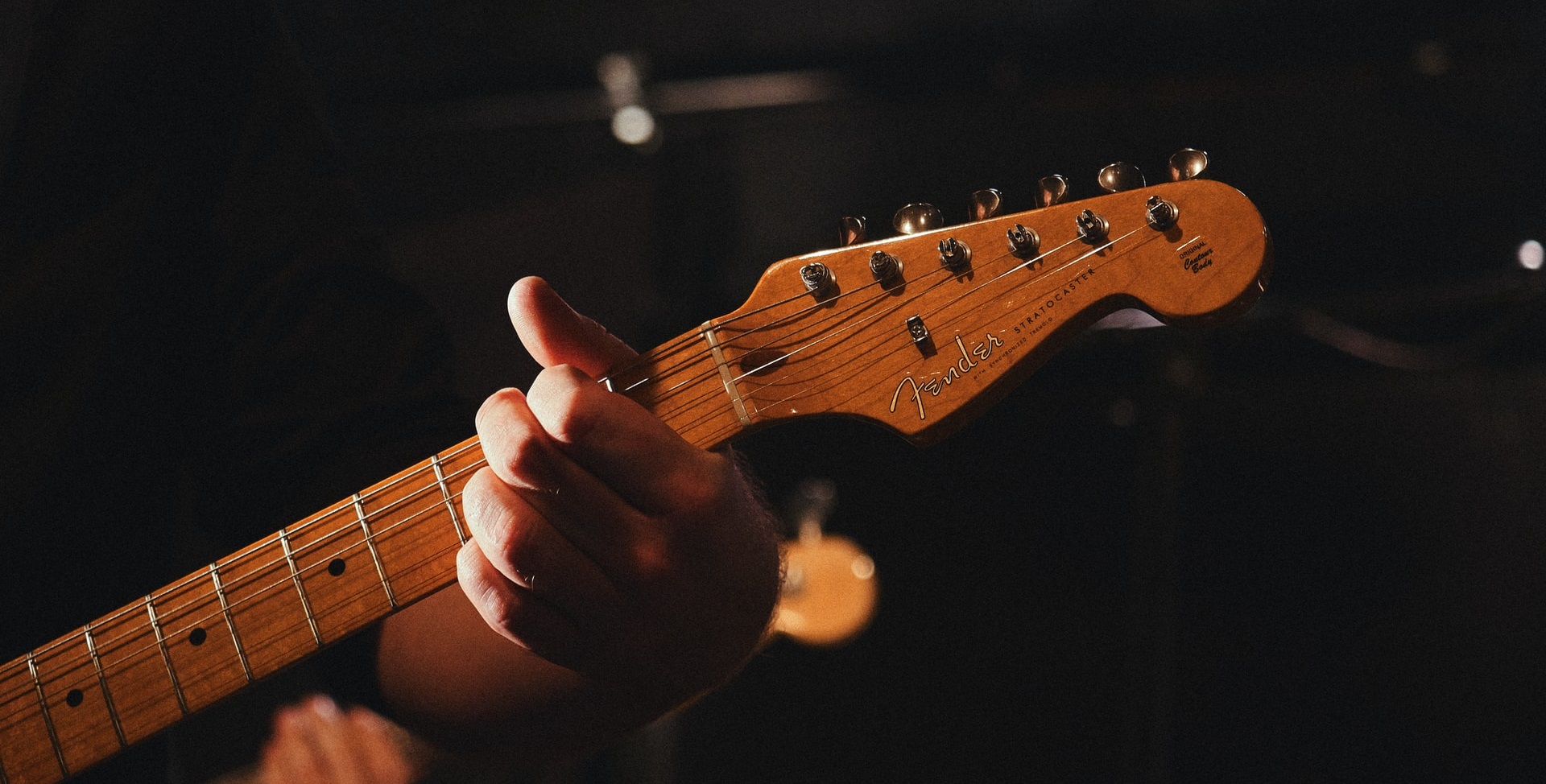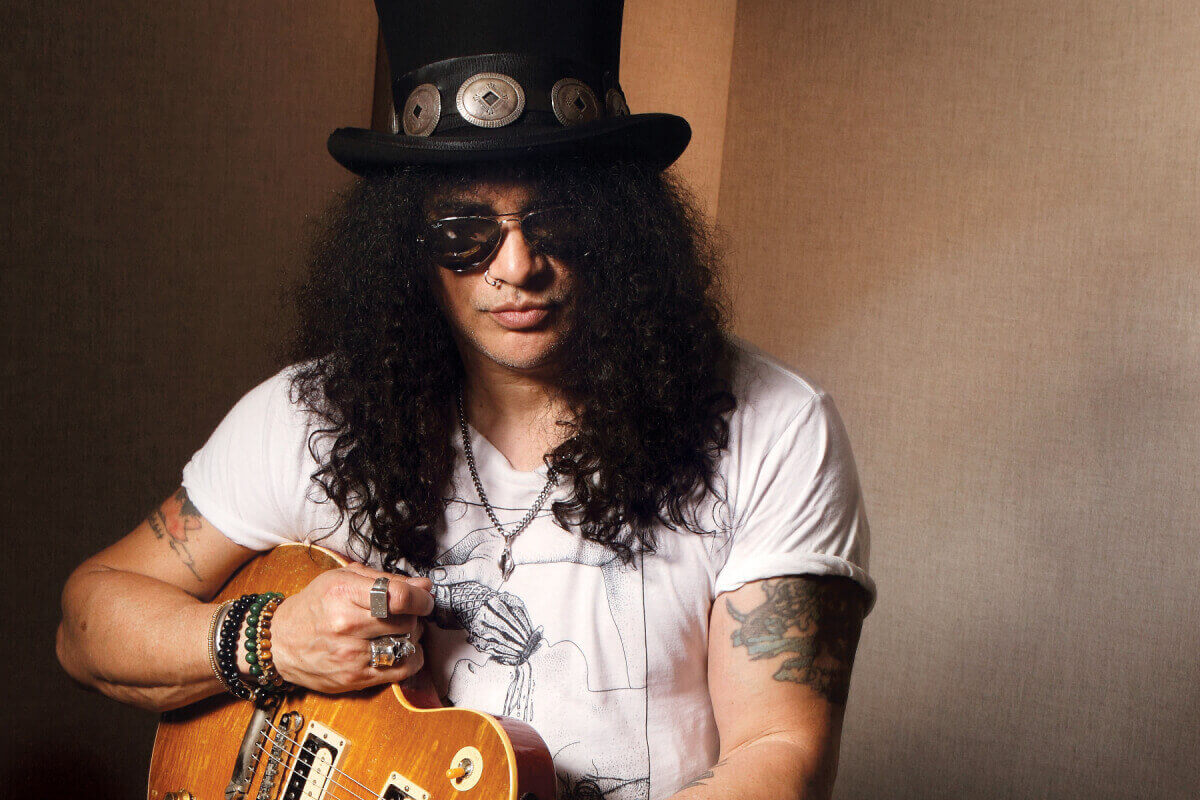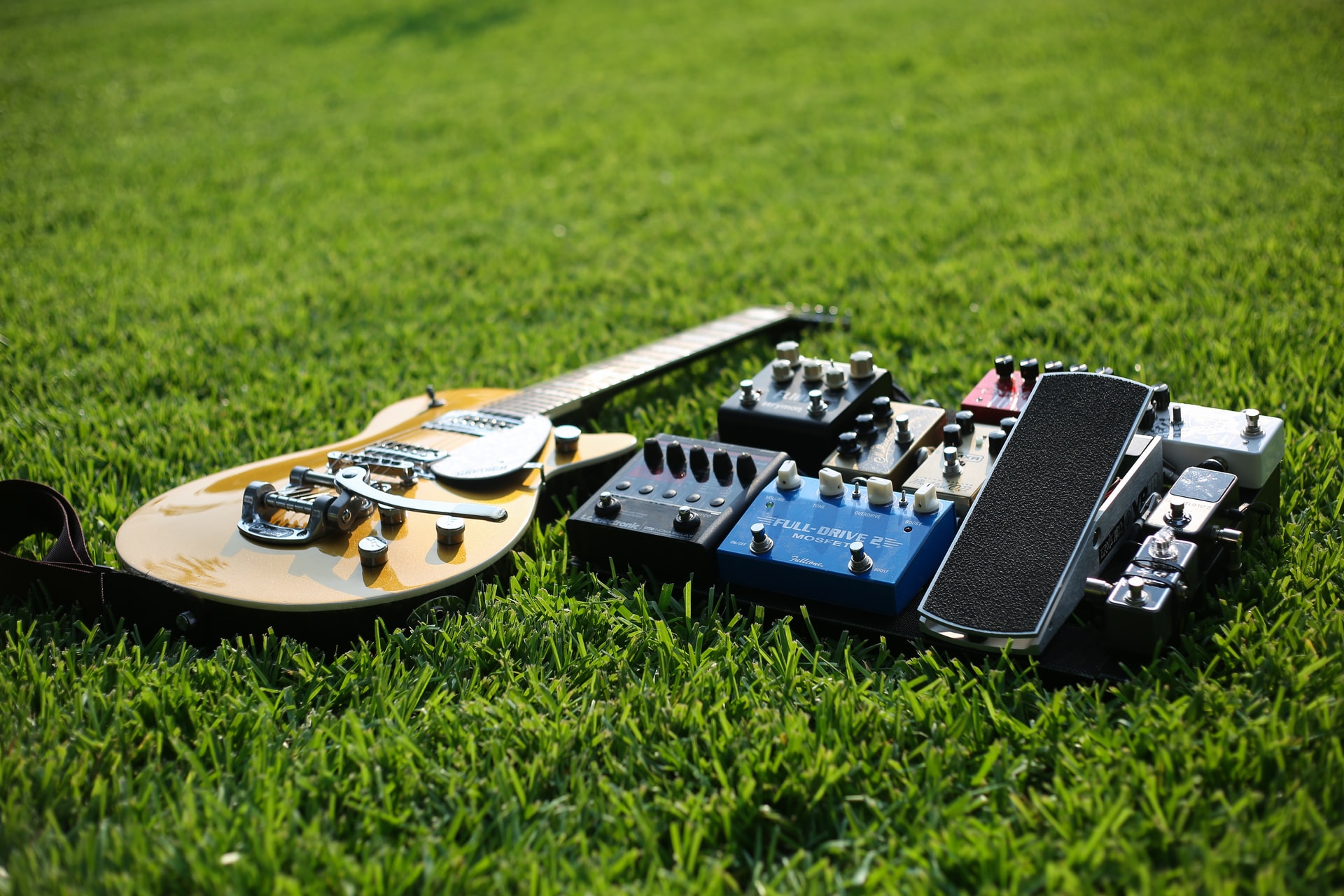Do you need big hands to play guitar?
One of my main concerns, even before buying my instrument, was just that: “Are my hands even big enough to play?”
It all sounded impossible to me!
And there I was, searching on the internet for people that have done it, and looking for different opinions on this topic.
This article is going to do mainly two things: answer all questions regarding this topic and also share the best tips to get around having small hands.
Let’s start…
Table of Contents
Do you need big hands to play guitar?
No, you don’t need big hands to play guitar. It is all about practice and having the right technique at all times. Every single person is able to play the guitar regardless of whether they have huge hands or small ones. It all comes down to effort and finding alternatives to difficult things. The more you do it, the better you will get at it.
Now…
There are many different tips that you should always use to make it better for yourself when you are starting out.
If you want to know more about those, then I encourage you to keep reading, as I will also share some of my personal experiences with this issue and how I solved it to be able to play whatever I want.
Playing guitar with short hands
Before I start, let’s make sure we’re on the same page.
Your hands do not define you as a guitarist, it’s what you do with them that does.
Some people do have small hands that make it super hard to learn at first, but have in mind that others have done it!
Many guitarists, even while having a young age, have managed to beautifully play the guitar:
As you can see, she even plays barre chords.
Her ability to play the guitar has not been influenced by her age nor hand size.
Also, take a look at Sungha Jung when he was younger:
He also is a very talented guitar player.
And again…
Even at an early age, he was able to absolutely play whatever he wanted to.
If you want to go the extra mile!
There are humans that are playing guitar with their feet.
It is amazing what you can achieve whenever you have the right mindset.
Ok, before you come at me…
Yes, that last one is fake!
But here is my point: you might say that these are rare cases and that they are really gifted people.
While that might be true, they are still humans like us, so just never underestimate your abilities to do something similar.
Another thing that I wanted to mention is whether your hands are fully developed by now.
If you fear that you won’t be able to play the guitar, make sure that you have in mind your age and if your hands are possibly going to grow even more.
Before you completely stop attempting to learn to play, think about all alternatives ways possible.
Here are some of the best tips and tricks that I’ve found useful throughout the years, that will surely help you.
Best tips to play the guitar with small hands
-
Use your fingertips instead of your fingerprints
When people are starting out, the last thing most of them do is have a good form.
Most beginners either use the wrong part of their fingers to play or have their hands way too tense all the time.
That inevitably makes it harder to play the guitar.
If you feel like you have short hands, then you can do this:
Use your fingertips instead of your fingerprints to press on the strings.
Note: Put your left-hand flat in the air and point at yourself. The part that is closer to the nail, that’s what we are referring to as “fingertips”. This might sound obvious, but many people still get confused about it.
While every guitarist should do this regardless, beginners should definitely put more emphasis on getting this right so that they can build good posture from the start.
People with small hands will get benefited from this since it will give them more space, freedom to play in an organized way, and the ability to press on the right notes at all times.
This video will help you understand this in a better way!
He talks about how to press the frets with the right part of your finger and also gives great demonstrations of what you should be doing.
I encourage you to watch it since it will give you a great visual idea of what we have been talking about up to this point.
-
Press your frets in the right position
If you watched the video above, then you might have noticed this by now.
But when you play chords or simply press on a certain note, you shouldn’t be putting your finger in the middle of the fretboard.
There are many reasons for this, but the main one, and in my opinion, the most important one, is that you will be putting unnecessary force on the strings that will rather make it sound bad.
Not only that, but your fingers will be more further away from each other than they should be.
And if you have small hands, then you know you don’t want this happening at all.
For a better visual representation of this, you should definitely watch this video:
He talks about where exactly you should be positioning your hands and he makes great points as to why you should press your fingers closer to the fret.
This, in short, is because you will potentially be cutting the sustain of the string, making your hands hurt, and maybe even pitching up your strings due to all the excess pressure.
If you get used to this now, you will dramatically speed up your learning time, and just like it happened to me, you will be playing in a much comfortable way.
Why?
Simply because getting used to playing the guitar in the wrong ways will make you have to re-learn everything once you realize that you’re doing it wrong and might even injure yourself.
Slowly learning good habits will always be better for beginners!
-
Use your thumb in the right way
This is also very important to have in mind because if you don’t place your thumb in the right place, it will make your fingers feel short.
There are many ways in which you can place your thumb to make your playing feel more comfortable.
But…
It all depends on what you are attempting to do.
Two examples of different scenarios could be:
- Playing a solo
- Playing a certain chord
Each one of those will inevitably make your thumb move.
Due to that same statement, it’s safe to say that your thumb is never going to have one exact position all the time.
For example, take a look at this image:
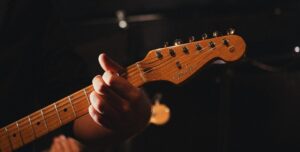
That is a G major chord being played.
And as you can see, the thumb is sticking out of the guitar neck.
You also will find many other people that play that same chord with their thumb strictly behind the neck, applying pressure as you normally would.
There is a notable difference between those two thumb positions.
Your fingers will have more freedom in the second one, and not in the one shown in the picture above
Take a look at where the thumb is positioned here:
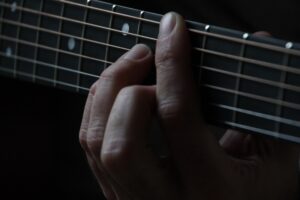
That right there is how I would do it if I had small hands.
It will give you more space to not have your fingers too close to each other.
And if it feels uncomfortable at first, try to get used to it for a while, and then gradually move it to where you feel a little better.
Using that same position minimizes injuries as well!
-
Work on the appropriate posture
Your posture when playing the guitar matters a lot in being able to play with shorthands.
Moreover, not only your posture but the guitar’s posture is equally important in this regard.
The way you hold and place your instrument can help or destroy your ability to correctly learn.
If you are playing standing, make sure that you are not wearing it too low.
As a beginner, you shouldn’t do that either way, but yes, having your guitar strap extremely low will make it harder for you to play.
On the other side…
If you are sitting down, make sure to keep your back straight, and your guitar in a balanced position.
One thing that you should pay attention to as well is your wrist.
Moving it a little bit forward will ease your learning as well since it will give your fingers the ability to reach the upper strings in a more comfortable way.
-
Buy a small guitar
Look, if it comes to the point where you have tried everything possible, but your guitar is still bothering you…
Then you might want to consider buying a smaller guitar.
I don’t know whether you are reading this article for yourself, or maybe even for your kid.
But, either way, if after you attempted to do everything we said and waited some time so see if some progress was made, your hands are still hurting or you can’t even play simple chords, then there are many other options for you to try out.
Guitars come in many different shapes and sizes.
See this picture for example:
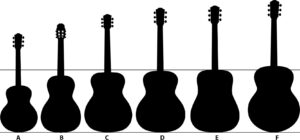
That goes to show that there are guitars with different shapes and altogether different neck sizes that you can buy to use it to your advantage and make it easier to play.
Reasons to not give up and keep trying to play guitar
-
Other people have done it
You have heard it before…
There are a lot of guitarists such as Angus Young from AC/DC who play guitar with shorthands and have been known for doing so with immense expertise.
Here is a video of him talking about how he overcame that obstacle.
Take that as inspiration!
If he can do it then there is no way that you cannot.
Watching that video should allow you to see how he uses his pinky finger to play power chords instead of his ring finger.
Use different chord variations.
That’s one strategy that you can potentially use as well to get around having small hands.
-
Use warm-up exercises and stretch yourself before playing
I’ve said this before and I’m saying it again, never underestimate yourself.
If you see that it’s hard at first for you to play, just challenge yourself and don’t give up.
Use guitar exercises to warm up and physically stretch your fingers before playing.
This next video will teach you a very basic yet effective way of stretching your hands.
I really encourage you to do this every time before you start practicing.
Even if you are an advanced player, doing this will make the biggest difference.
-
Have fun
Let’s be honest…
Why do we even play guitar in the first place?
To have fun and a good time with ourselves, our friends, and our families.
It’s a beautiful hobby to have!
So, one last thing I would love to say is: just have fun with it at all times.
Don’t put yourself in the loop of not wanting to even attempt to learn it just because it seems hard.
If you can’t play the guitar that well in the beginning, at least make sure that you use it to have a good time.
Just remember, a lot of people were in that same position.
Keep going and don’t give up.
Here are other resources I wanted to share:
These videos are great sources of knowledge and opinions if you want to hear some thoughts from somebody else on this same topic.
In the video above from Andy Guitar, he talks about the A major chord, and how it’s easier for some people to play it in the traditional way, but how others might be able to do it by just using their index finger.
That goes to show yet another way that you can get around not being able to do certain things with a guitar.
This other video will also give you another great point of view on this topic:
He mentions how it is a doable thing and how practicing and being able to focus is very important while playing guitar.
You should definitely watch it for motivation!
Conclusion
As you can see, you will be able to play the guitar regardless of whether your hands are big or not.
It all comes down to effort and how much time you put into getting comfortable playing the guitar.
Be aware of all the correct ways to do things and take everything slowly.
It is alright for you to struggle in the beginning, we all did at some point.
Just keep going and before you even know, you will be playing everything you once wished to play and thought it was impossible at some point.

Dad, husband, son, and guitarist. I’ve been playing guitar for 20 years. Passion for writing, painting, and photography. I love exploring nature, and spending time with my family. Currently have a Gretsch G5220 Electric Guitar as my main instrument.

